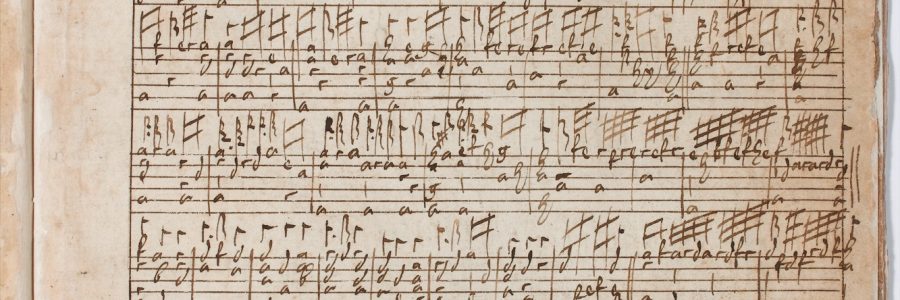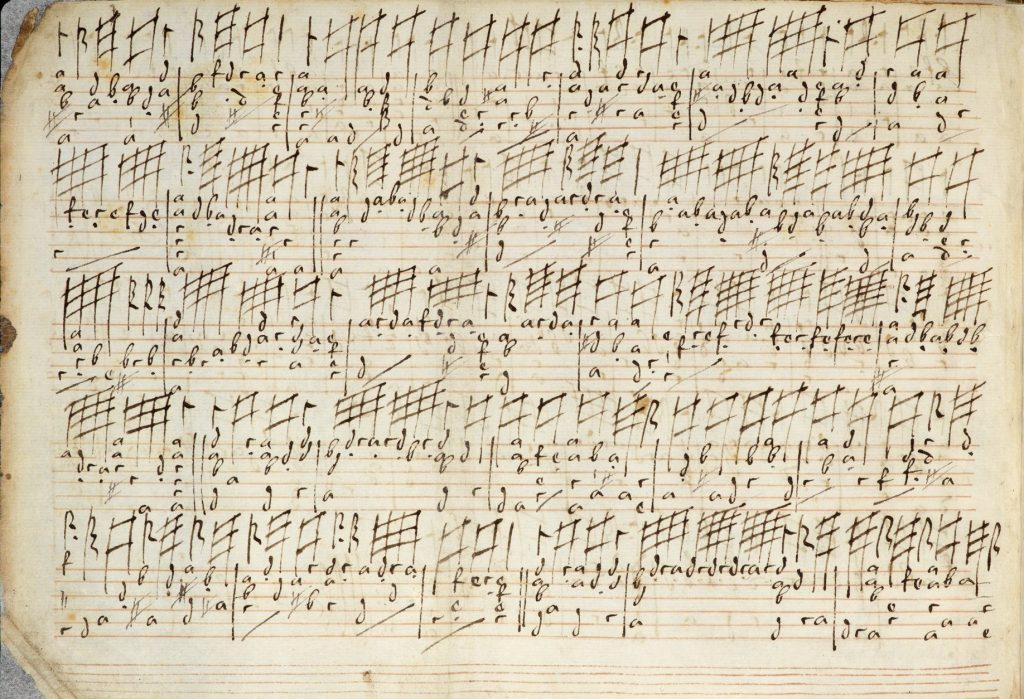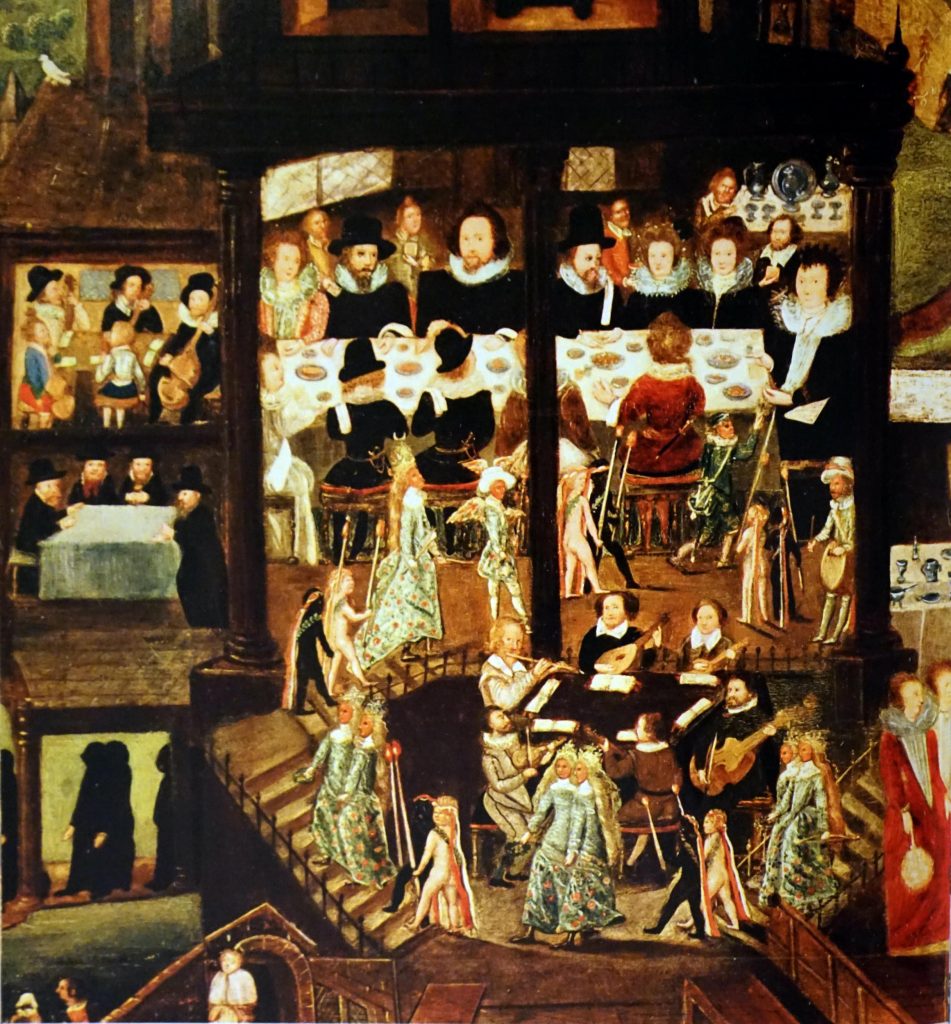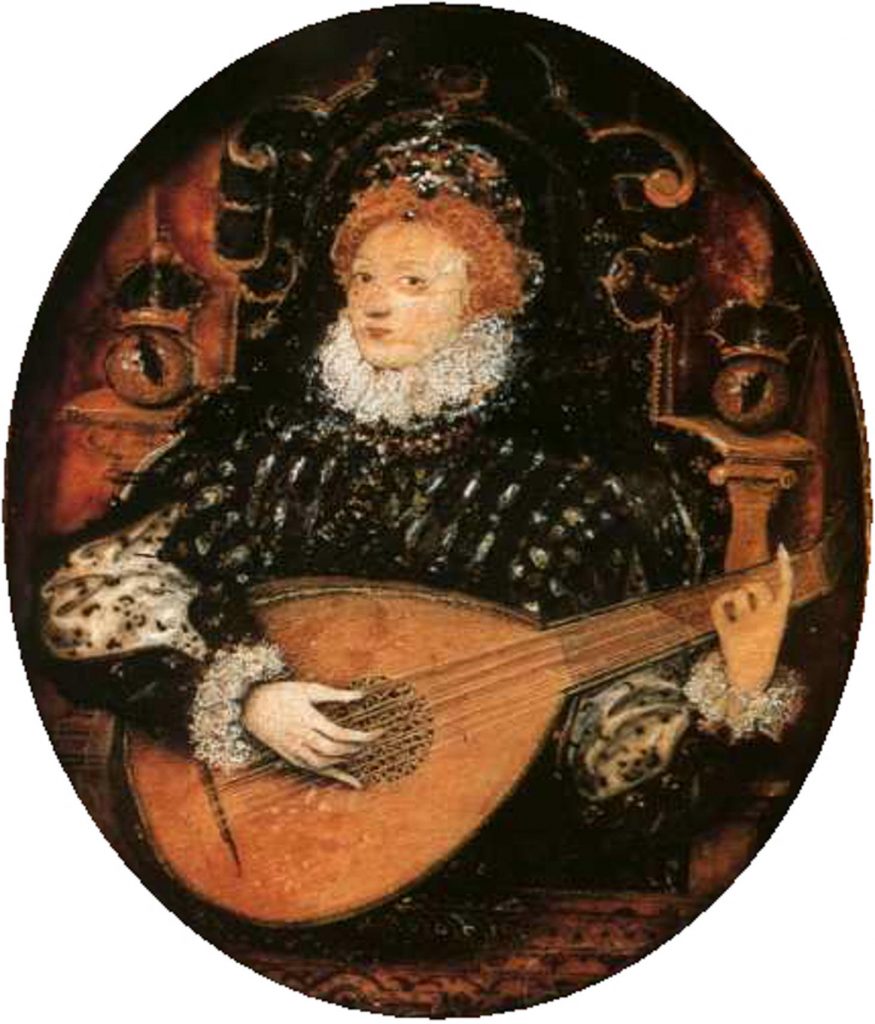
‘Silver sounded Lutes’ and ‘other musicall Instruments’: Elizabethan music in Cambridge University Library
This guest post is by Richard Robinson – PhD student in Music at St John’s College, Cambridge – and explores Elizabethan instrumental music in the Special Collections at Cambridge University Library.
If you were asked to say something off the cuff about music in Elizabethan England, then you would very probably think of the lute—and with good justification. Alongside its popular association with William Shakespeare and even Queen Elizabeth I herself (as in Nicholas Hilliard’s wonderfully evocative miniature of her playing the instrument), the lute is represented by a large corpus of late 16th- and early 17th-century English printed and manuscript sources containing lute solos, ensemble pieces and lute songs written by some of the most famous composers of the day.[1] Chief amongst these sources are nine manuscripts that were compiled by Mathew Holmes (d.1621), a precentor and ‘singingman’ at Christ Church, Oxford and subsequently at Westminster Abbey, which are now housed among the special collections of Cambridge University Library.[2]

These manuscripts comprise:
- four for the lute (Dd.2.11, Dd.5.78.3, Dd.9.33 and Nn.6.36);
- one for the cittern (Dd.4.23); and
- four partbooks for the quintessentially English consort of ‘sixe seuerall instruments’, namely: lute (Dd.3.18), bass viol (Dd.5.20), recorder (Dd.5.21) and cittern (Dd.14.24) (the remaining two partbooks for bandora and treble viol/violin—presumed to have existed originally—have not survived).
Unsurprisingly, and for several reasons, the Holmes lute and consort manuscripts have acquired special status amongst surviving Elizabethan music. Firstly, they represent the most extensive source of contemporary English lute music to survive anywhere in the world, with over 650 pieces from c. 1590–c. 1615 across the four solo lute manuscripts. Indeed, MS Dd.2.11 alone preserves more than 260 lute solos, some of which subsequently appeared in printed collections reworked for voice and lute (e.g. several songs by John Dowland) or instrumental ensemble (e.g. pavans and galliards by Anthony Holborne).


Secondly, the Holmes manuscripts include an important collection of solo cittern music, whilst solo bandora pieces are also copied into some of the lute books. Thirdly, the lute partbook (Dd.3.18) of the mixed consort books preserves the otherwise missing lute part of certain pieces in Thomas Morley’s famous printed collection, The First Booke of Consort Lessons (1599, reprinted 1611) and it also includes an important group of some thirty-five lute ‘treble’ duets. Lastly, the Holmes mixed consort partbooks are unique in their stipulations for recorder and violin (both occur in Dd.5.21), in contrast to the flute and treble viol required for all the other mixed consort sources. This latter point reminds us that musicians probably sometimes made changes in instrumentation to suit their own ensemble, as suggested by recently discovered references in literary sources where the violin/treble viol is substituted for a cornett.[3] Apart from the Holmes manuscripts, recorders also occur alongside lutes and viols in iconography such as the Eglantine Table in Hardwick Hall and the ballroom chimneypiece in Knole, Kent, although written evidence for the mixed consort mentions ‘flute(s)’ or ‘pipe(s)’, not ‘recorder’.

Viewed as a whole, the manuscript collection of Mathew Holmes reflects his status as a musical professional with a theoretical training; he did not play the lute for a living. Possessing an amateur practitioner’s enthusiasm for this instrument, Holmes used his connections to compile a comprehensive collection of the best lute music known in England at the time. Thus, without the fortunate confluence of several important factors—Holmes’s network, his methodical nature and the survival of these manuscripts—our knowledge of Elizabethan and Jacobean lute music would be indisputably poorer: a potential loss or ‘vnhappie fate’ that would be hard to contemplate indeed.
Want to know what this music sounds like? For an introduction, here are a few suggested commercial recordings with pieces from the Holmes manuscripts and related repertoire that can be listened to online:
Solo lute
Holburns Passion. Music for lute, cittern and bandora. Anthony Holborne; Jacob Heringman (with Susanna Pell (bass viol) for 3 tracks) (ASV / Gaudeamus CD GAU 173; 1997)
John Dowland. Complete Lute Works; Paul O’Dette (Harmonia Mundi 2907160.64; 1997)
Lute Duo
Two Lutes: Lute Duets from England’s Golden Age; Ronn McFarlane and William Simms (Dorian Sono Luminus DSL92155; 2012)
Mixed Consort
Thomas Morley, The First Book of Consort Lessons; La Caccia / Patrick Deneker, Philippe Malfeyt (Ricercar RIC251; 2007)
In the Streets and Theatres of London: Elizabethan Ballads and Theatre Music; The Musicians of Swanne Alley (Erato Veritas 4820792; 1989/2005)
(All images courtesy of Cambridge University Library and Alamy)
[1] For an overview, see Matthew Spring, The Lute in Britain: A History of the Instrument and its Music (Oxford, 2001), pp. 96–289.
[2] Holmes was first identified as the copyist by Ian Harwood, ‘The origins of the Cambridge lute manuscripts’, Lute Society Journal, 5 (1963), pp. 32–48.
[3] Richard Robinson, ‘’A perfect-full harmonie’: Pitch, tuning and instruments in the Elizabethan and Jacobean mixed consort’, Early Music, 47:2 (2019), pp. 199–223, (pp. 209–211).

